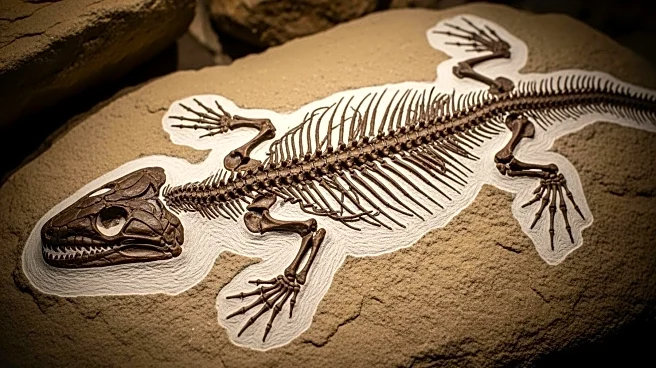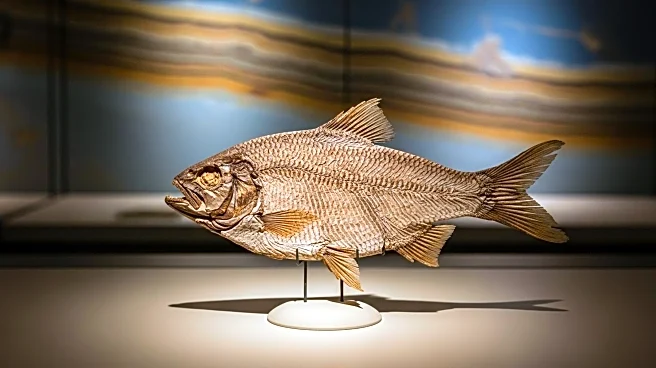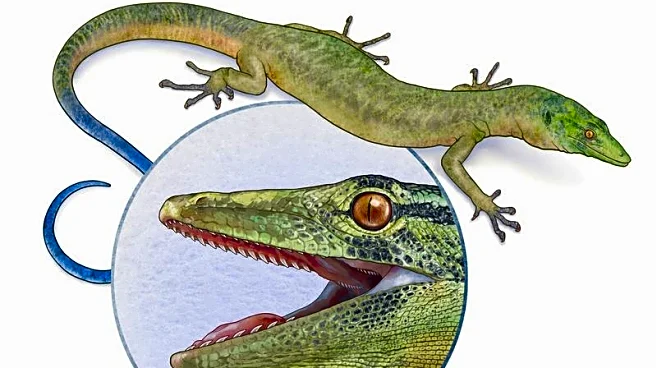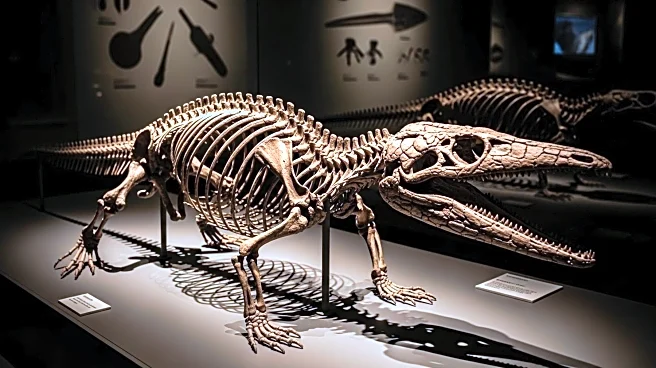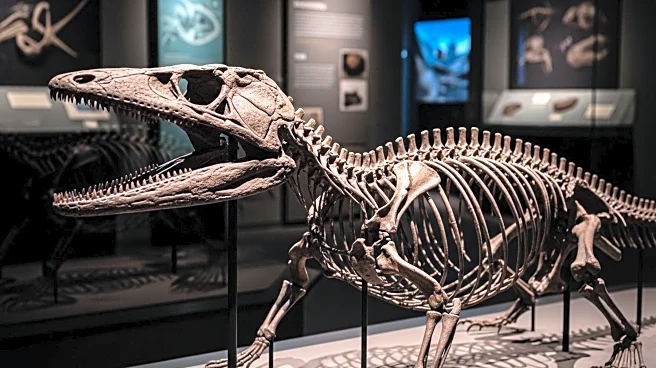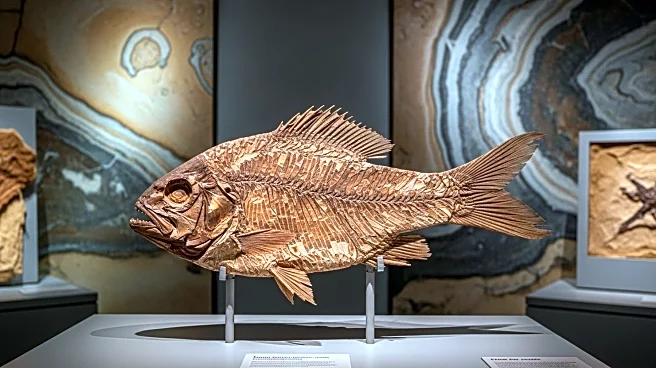What is the story about?
What's Happening?
A fossil of a small reptile from the dinosaur era, discovered in Scotland, is baffling scientists due to its mix of snake-like and lizard-like traits. Named Breugnathair elgolensis, this creature lived approximately 167 million years ago and possessed snake-like teeth and jaw features, yet had lizard-like body proportions and well-developed limbs. The fossil represents one of the oldest relatively complete specimens from the squamate group, which includes lizards and snakes. Researchers are debating whether Breugnathair is a lizard-like ancestor of snakes or an evolutionary oddball with independently evolved snake-like features.
Why It's Important?
The discovery of Breugnathair elgolensis provides new insights into the complex evolution of squamates, a group that includes lizards and snakes. Understanding the evolutionary history of these reptiles can shed light on the development of key anatomical features and ecological adaptations. The fossil challenges existing theories about snake ancestry and suggests that early squamate evolution was more intricate than previously thought. This research could influence future studies on reptile evolution and contribute to the broader understanding of biodiversity during the Jurassic period.
What's Next?
Researchers will continue to study Breugnathair elgolensis to determine its place in the evolutionary history of squamates. Further fossil discoveries and advanced genetic analyses may help clarify whether this reptile was part of the snake lineage or an evolutionary dead end. The study of Breugnathair could guide scientists in identifying traits to look for in future fossils to better understand snake ancestry. Ongoing research may also explore the ecological role of Breugnathair in its environment and how it interacted with other species.
Beyond the Headlines
The discovery of Breugnathair elgolensis raises questions about the ethical implications of fossil research and the preservation of paleontological sites. As scientists uncover more fossils, there is a need to balance scientific exploration with the protection of natural heritage. Additionally, the study highlights the importance of interdisciplinary collaboration in paleontology, combining expertise from fields such as genetics, ecology, and evolutionary biology to unravel complex evolutionary histories.
AI Generated Content
Do you find this article useful?
